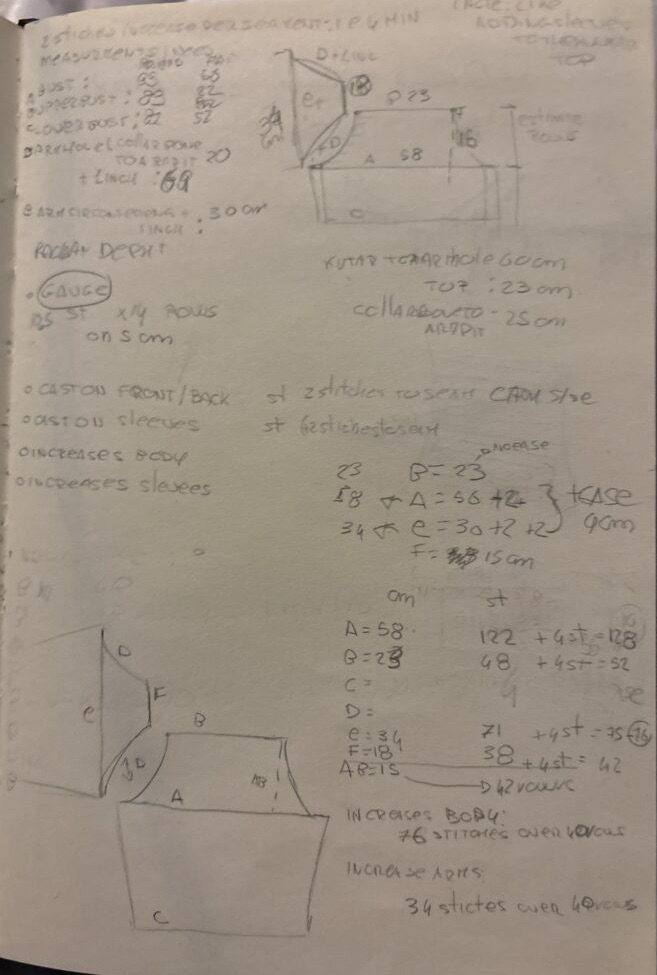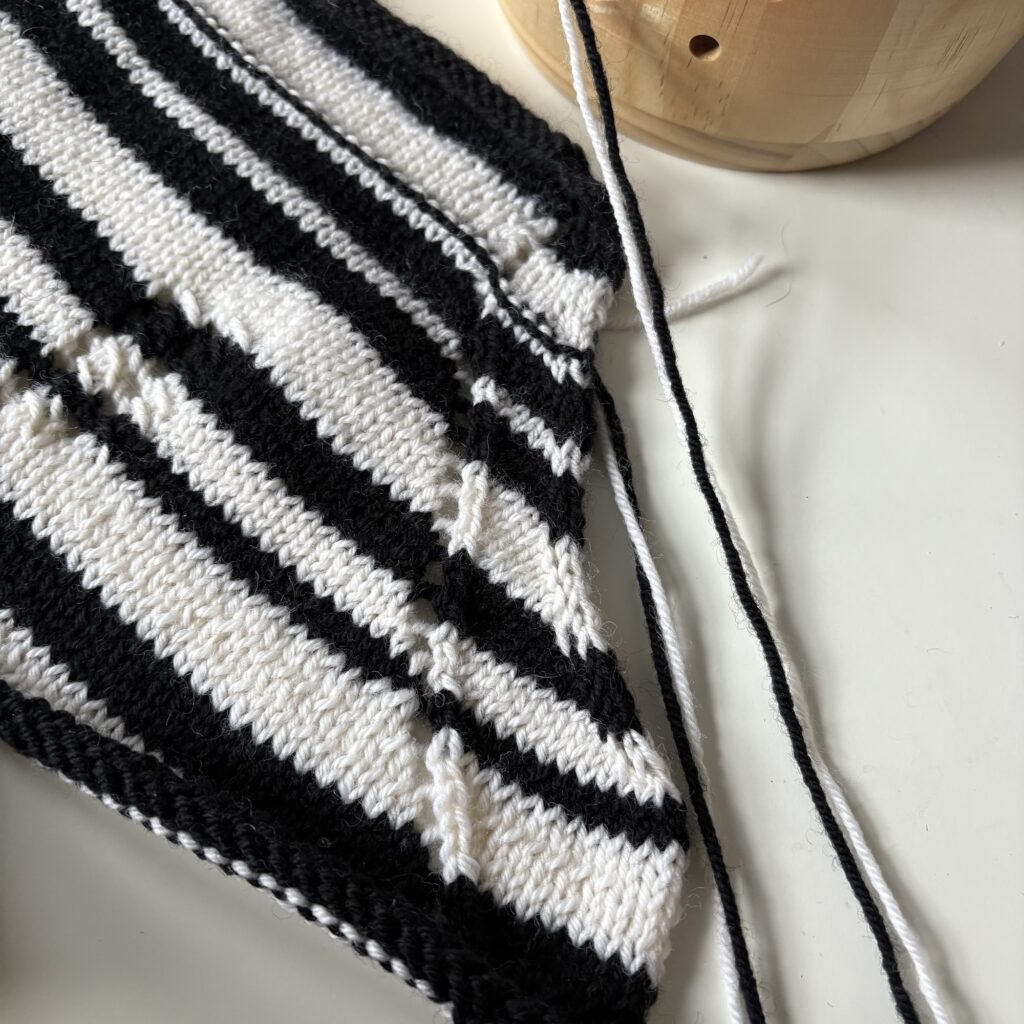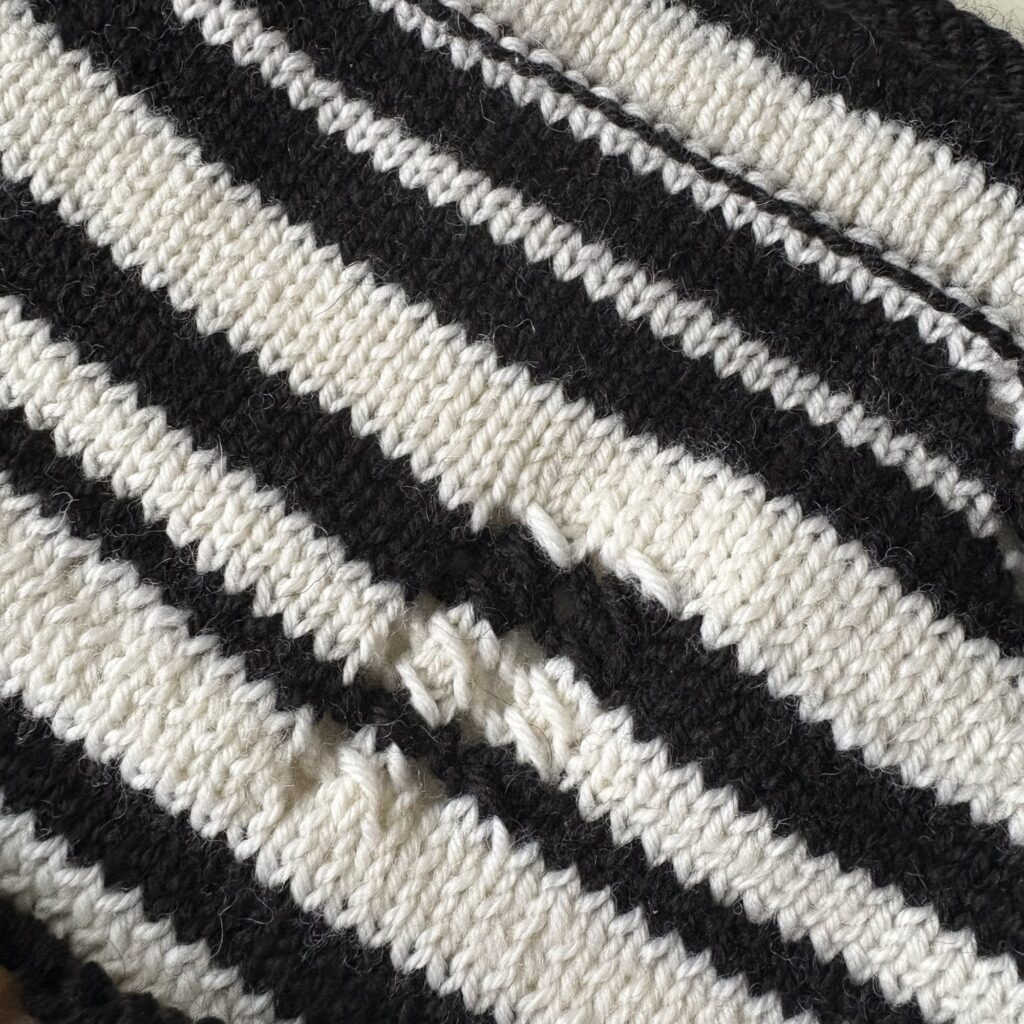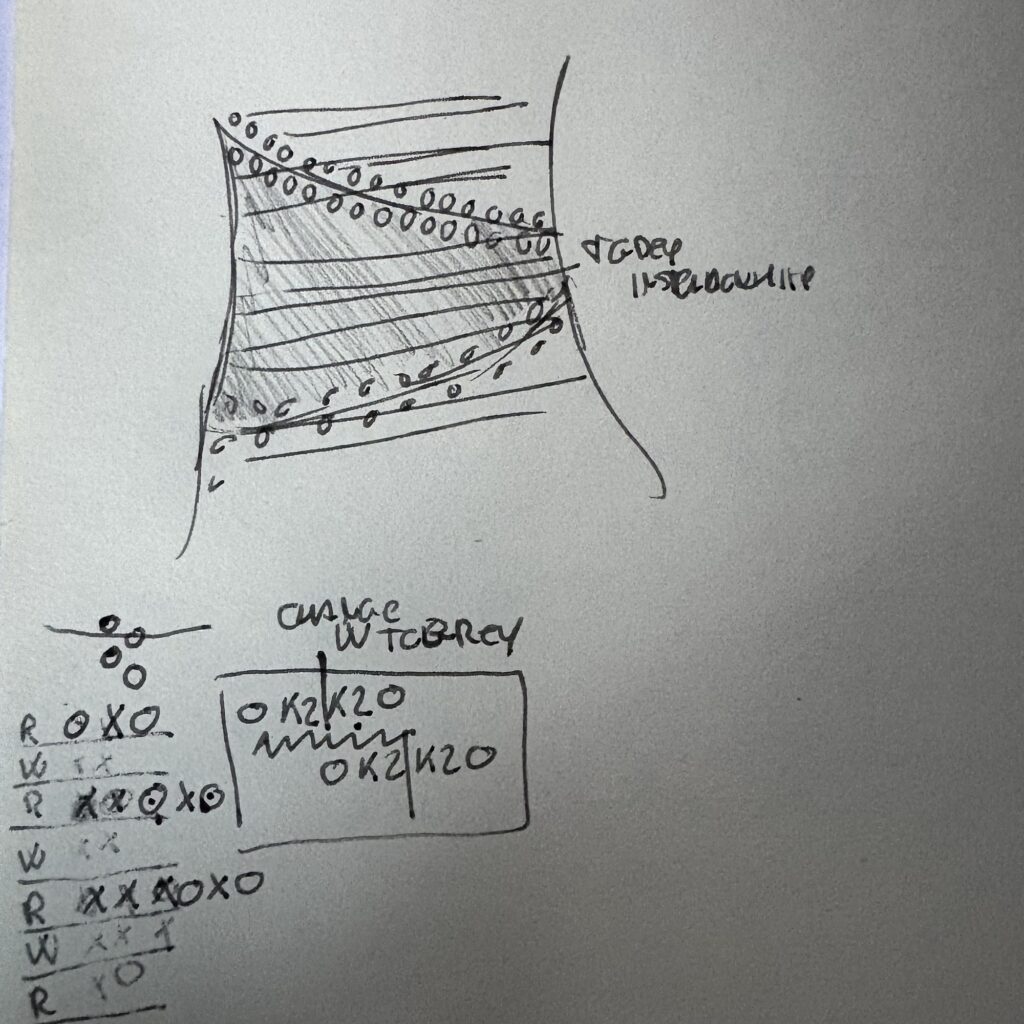Astrid Mini Dress – Pt. 2
In the last post, we left off with some construction decisions to be taken. After much pondering, googling, and scribbling, here’s the verdict:
- Flat
- Top down
- Raglan
Now, this will require a lot of winging it. Do I have the skills to pull it off? Likely not, what I do have is an (un)healthy dose of obsessive behaviour/hyperfixation.
Problem with hyper fixation is that soon something else comes in leading me onto some other project, but I managed to get started after a lot of intense math and research.
And as expected I then paused because college, and to finish another sweater for a friend’s birthday in December I had started back in July, so I had been working on that almost exclusively. That is why this post was started in November…
Luckily, I took notes so I could now pick up the project again quickly. There will be a long list of links I used to help me figuring out thing.
Let’s try to summarise what I did up to now.
First, I started with a swatch, so I could get the number of stitches per 10cm, and used it to make the calculations to figure out cast on stitches and increases. The video below helped me a lot.
Flat, raglan and top down were not a combination I could easily find information on, so I had to try to figure out how to achieve this by looking at flat bottom up raglan patterns, and adding increasing instead of increases.
Excel came to my help, and after a bit of tinkering I was able to decide the cast on stitches and increasing that *should* work.
The verdict was:
- Cast on 56 stitches and increase to 112 for the body. Although I only increases to 100.
- Cast on 32 stitches for the sleeves and increase to 88. This will have to change as I didn’t increase up to 112. But let’s cross that bridge once we get there.

Figuring out the increase was a bit of a challenge, normally, raglan increases are regular, e.g. every other row, but I was reading about compound raglan, where the rate of increase varies creating a more natural fit, so it took a bit more of Excel math but eventually figured it out. I wanted to add some decorative increases with yarn over, but since the rate of increase was irregular I have used yarn yarn overs and K2tog/SSK, however, I didn’t really understand how it worked so it’s not equidistant from the armhole… but I think it was an happy accident!

It doesn’t have any back shaping, so to avoiding bunching up I plan to make it off the shoulders, and add ribs later around the neck, and maybe some back shaping at that point, if I can figure it out. Anyway, another bridge to cross eventually…
Finally, I wanted to reproduce some of the torn areas without actually ripping anything, so added some “holes” by yarning over and decreasing at random (yo, slip 1, K2, pull slipped stitch over).

I’m knitting back and front at the same time, so that I can check the fit as I go along, and it’s going quick enough as it’s not fingering weight and also not all knit stitch, which kills me…
I worked both up to all increasing, and blocked it to check the fit. Now I’m working the rest of the rows in my Excel pattern, which I’m planning to repeat over the full dress.
Next, I’ll need to figure out the bust shaping and also how to reproduce the pattern in the drawing below. The original dress has lingerie clasps, and I have been thinking to use a zip to reproduce the same feature, however, I think that would be way too difficult, so I decided to keep using the little holes pattern to create an affect of being in parts, by also switching the white with the grey… not sure I make sense, so here’s a sketch.

References
- Compound Raglan
- Assembling a raglan sweater knit in pieces
- Sweater Construction: The Many Ways to Knit a Sweater – tin can knits
- A Look at Top-Down Knitting Techniques
- Improv: Basic pattern for a top-down seamless sweater
- Flax: How to Knit a Top-Down Raglan Sweater with a Free Pattern
- Demystifying Sweater Construction: Top-Down or Bottom-Up
- Modern Raglan Sweater Adjustments to Get a Better Fit
- Increase Lines